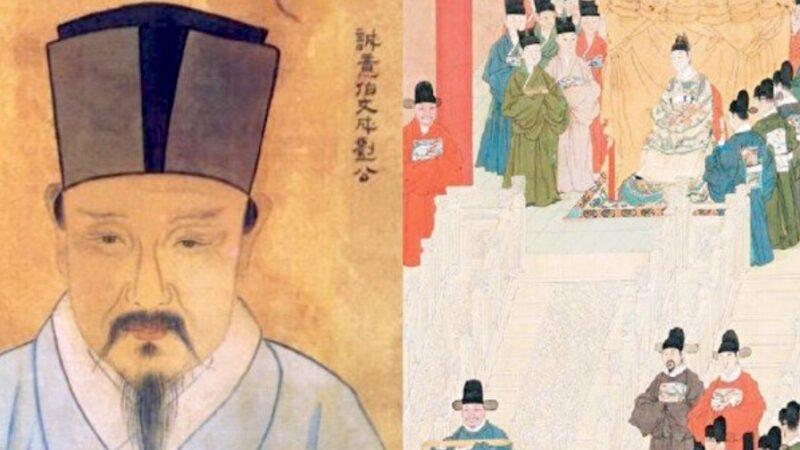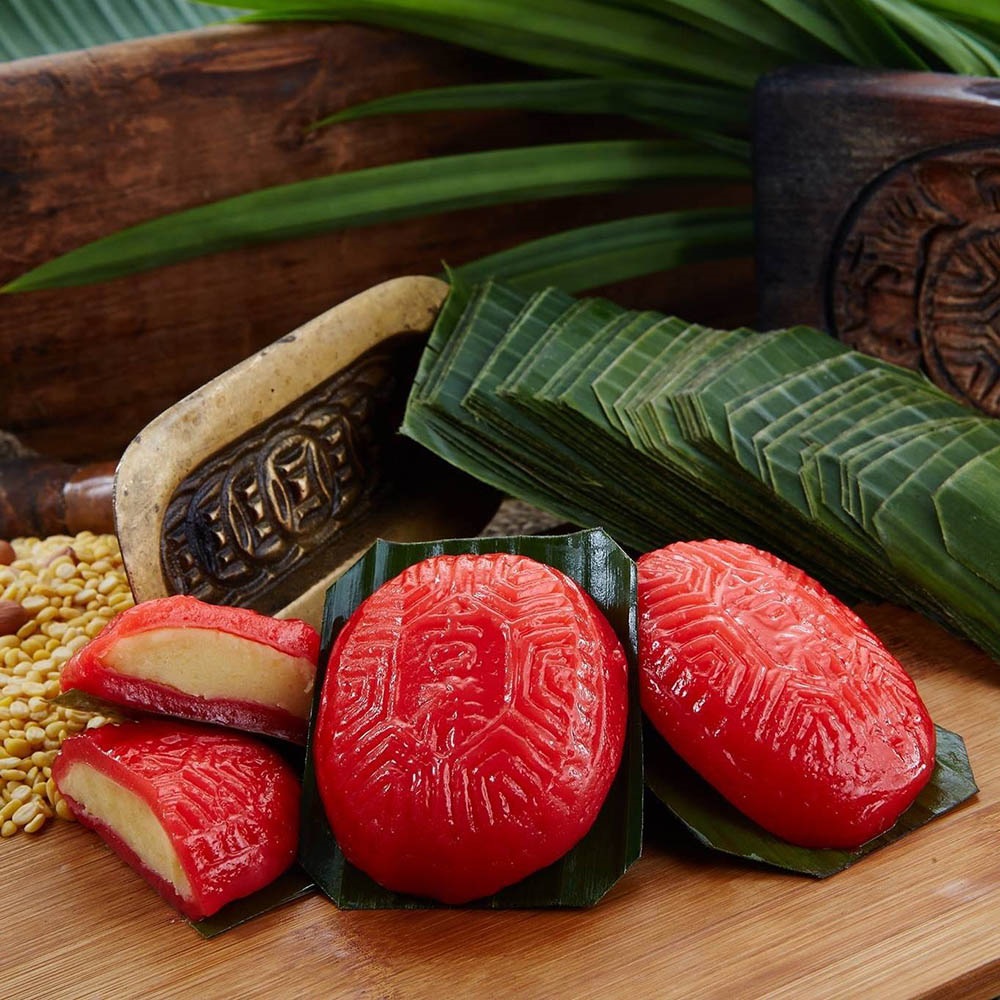The Shaanxi Mount Taibai Inscription by Liu Bowen, a series of prophecies from the Ming Dynasty, warns of a terrible calamity that will happen between the years of the Rat and the Pig.
Coincidentally, between the years 2019 and 2020, mainland China has had a string of epidemics, including the African swine fever, the bubonic plague, and recently the Wuhan coronavirus. It is likely that Liu’s inscription referred to this period in history.
Liu Bowen was the key advisor to Zhu Yuanzhang, who overthrew the Yuan Dynasty and founded the Ming Dynasty. Liu was also the Ming Dynasty’s founding prime minister.
Not only was Liu a wise and incorruptible prime minister, he was also a Taoist master. Known as “China’s Nostradamus”, he left behind many prophecies, including the well-known Pancake Poem. Many of his prophecies have been verified over time, while the rest have yet to be fulfilled.
Liu’s Mount Taibai Inscription was found after an earthquake, and it describes a terrifying calamity that will occur during the dharma-ending period.
About 2,500 years ago, the founder of Buddhism Siddhartha Gautama predicted that his dharma could only be passed down for 500 years. This would be followed by the dharma-ending period, where Gautama’s dharma would no longer be able to offer salvation to the people.
We are now in the dharma-ending period. In many cultures around the world, there are prophecies of a great calamity during the dharma-ending period that will take place around the turn of the century.
The Mount Taibai inscription not only forewarns of the coming dangers, it also advises on how to avert the calamity. Here is a translation of the inscription, and its interpretation from Zhengjian.org.
The Shaanxi Mount Taibai Inscription by Liu Bowen
Heaven has eyes, the Earth has eyes; everyone has a pair of eyes,
Interpretation: Human history has always been determined by the order of the universe. The actions of humans cannot escape judgment by the mandate of Heaven (“Heaven has eyes, the Earth has eyes”). Therefore, people should govern themselves according to the law of Heaven, and differentiate good and evil with their own eyes.
Heaven will be in turmoil, the Earth will be in turmoil; unlimited carefreeness and boundless joy.
Interpretation: The characteristics of truthfulness, compassion, and forbearance are the fundamental law of the universe. But as human moral standards degenerate and people draw further away from these fundamental traits, turmoil and chaos will arise. If one adheres to these universal virtues, one will enjoy “unlimited carefreeness and boundless joy”.
Of 10,000 poor people, 1,000 will remain; of 10,000 wealthy people, two to three will remain,
If both the poor and the wealthy do not return to [a good] heart, death will soon be before their eyes.
Interpretation: The calamity will be an epidemic. Nine of ten poor people will die, while only 2 to 3 of 10,000 rich people will survive. A famous 16th-century Korean prophecy manuscript, the Kyŏgam Ilgo, similarly mentions an epidemic in the dharma-ending period that will wipe out nine in ten families if people do not halt their moral decline.
The poor refer to everyday citizens in China, including regular Chinese Communist Party (CCP) members; the rich refer to CCP officials and high-ranking personnel. According to investigative reports, 90 percent of billionaires in China are from families of CCP officials. Not only have they benefited from the CCP, they are often guilty of corruption and other political crimes.
However, no matter if one is rich or poor, if they “return to a good heart” they may be able to avert the calamity. Otherwise, “death will soon be before their eyes”.
There will be no crops in the fields, everyone will be wary of their surroundings and the streets will be devoid of people and activity.
If you ask when the epidemic will happen, look to the Winter between the eighth and ninth months.
Interpretation: The epidemic will take place during the ninth and tenth lunar months. Because of the epidemic, the lands will be barren, and the towns and cities desolate.
Those who do good deeds will get to witness it, those who do bad deeds will not see it.
There are people on this Earth who do great deeds of goodness; those who die in the calamity will lose their lives in a way that is not worth their while.
Interpretation: the calamity will strike fiercely – “those who do bad deeds” will be eliminated before there is time to regret. “Those who do good deeds” will live to witness this process. Those who refuse to learn the truth about Falun Gong or read the Nine Commentaries on the Communist Party, and who continue to blindly support the CCP, will die in the calamity for something that is “not worth their while”.
There are also 10 imminent worries:
The first is that the world will be in chaos; the second is that people in the East and West will die of famine,
The third is that a wide lake will meet with disaster; the fourth is that smoke will rise from the provinces due to hostile forces,
The fifth is that the people will not live in peace; the sixth will happen in Winter between the ninth and tenth lunar months,
The seventh is that there will be rice but no people to consume it; the eighth is that there will be people but no clothes to wear,
The ninth is that there will be bodies but no one to pick them up; the tenth is that the pig and rat years will be difficult.
Interpretation: This calamity will also cause ten worries: chaos, famine, a natural disaster from water (“a wide lake will meet with disaster”); hostile invasions and unrest; and an epidemic in the Winter of the ninth and tenth lunar months. So many will die that “there will be rice but no people to consume it”, and “there will be bodies but no one to pick them up”.
The years 2019 and 2020 are the Pig year and Rat year respectively. The Kyŏgam Ilgo predicts that during the calamity, “the bodies from a deadly disease will pile as high as a mountain”; “no birds are seen in all six directions across a thousand mountains”; and “eight people can travel for 10,000 miles without seeing a living soul”.
In his Jinlin Pagoda Monument Inscription, Liu details another perspective of the epidemic: “Parents die, but it will be hard to bury them. Fathers and mothers die, and their children and grandchildren will carry [their coffins]. Every living thing on Earth is hit by the calamity; even the insects and ants are not spared.”
If one survives the year of great calamity, one can be considered an immortal on Earth.
Even for bronze arhats, it will be hard for them to get through to the first thirteen days of July,
Even if you are a diamond or bronze arhat, you will not be protected unless you are kind.
Beware of people during the difficult calamity; the tribulation will pass and the Heavens will turn during the dragon and snake years.
Interpretation: No matter if one is a mortal or a heavenly deity like an arhat, the only way to survive the epidemic is to be a good person and to practice truthfulness and compassion. One can only be considered safe if one makes it to the first thirteen days of the seventh lunar month of an unknown year, and the danger will be over during dragon and snake years (2024 and 2025).
The young children will be like Zhu Hongwu (founding emperor of the Ming dynasty); Sichuan will suffer more than the rest of the Han.
The great lion roars like thunder, surpassing 100 mourning tigers,
The rhino shows its tail, fierce encounters are met on flat land.
Interpretation: This may refer to the period when the CCP is eliminated by the heavens. A new leader will appear in China and this person will have the approval and assistance of the gods. The new leader is as powerful as a great lion and he will overturn the evil forces and bring peace to the country. During this time, strange phenomena will happen in the heavens and on Earth.
If one asks when the great peace will come, a bridge will be built to welcome the new master,
The first year of the 180-year cycle arrives, everyone laughs in happiness.
When asked, “Why are you laughing?” [It is to] welcome the new master,
Who is in charge of the heavenly realms in the day; there will no longer be thieves and robbers at night.
Although he is the master, he sits in the central land,
The people shout to the true master:
Interpretation: This describes events after the calamity, which will not mean the destruction of Earth. Instead, humans will welcome a time of peace and prosperity, as well as the start of a new epoch – “the first year of the 180-year cycle”. Mankind will sing praises of the “true master” from the bottom of their hearts.
Silver and money are precious but if one sees past them, they are no longer needed,
Indeed it is a treasure, it does not collapse even when the floor cracks open.
Seven people walk on one road, temptation enters the mouth,
Three dots and a hook, eight kings with twenty mouths,
Everyone laughs happily, everyone lives in peace.
Interpretation: This part of the prophecy is written ambiguously because there are two layers of meaning to it. Here, we will focus on deciphering the prophecy’s word riddle, for which we must use traditional Chinese characters.
“Seven people walk on the same road, temptations enter the mouth” refers to the ancient Chinese character for “truthfulness” (眞). The top radical is the Chinese word for “seven” (七), while the base consists of the radicals for “people” (人) and “one” (一). The Chinese character for “temptation” is (引). When the character’s left half (弓) is placed inside the character for “mouth” (口), it becomes the radical目. The right half of引, a vertical line, is placed next to the radical 目 to complete the character眞.
“Eight kings with twenty mouths” refers to the Chinese character “compassion” (善). The top radical is an upside-down “eight” (八). Below it is the radical for “king” (王) followed by the radical for “twenty” (廿). Finally, the base is the radical for “mouth” (口).
“Three dots and a hook” refers to the word “forbearance” (忍). The Chinese character for hook is 勾, which consists of two radicals (刀 and厶). When one dot is added to the top radical 刀, it becomes the radical刃. When two dots are added to the bottom radical厶, it becomes心. Combined together, the radicals 刃 and 心 form the character忍 (forbearance).




















